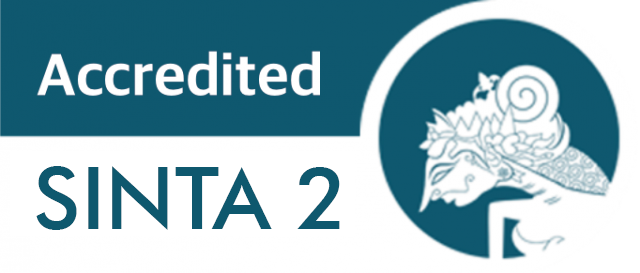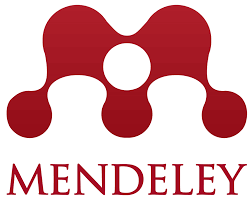Teacher Students’ Critical Literacy in the Academic Environment
DOI:
https://doi.org/10.15408/tjems.v8i2.24095Keywords:
Critical literacy, critical discussion, academic texts, social media texts, Literasi kritis, diskusi kritis, teks akademik, teks media sosialAbstract
Abstract
In an academic setting, critical literacy necessitates that teacher-students be critical of every text message (textbooks, videos, films, and other electronic media) that they read from courses. This study aims to illustrate the critical literacy of teacher students in an academic college environment in Jakarta, Indonesia, describing how critical literacy becomes a habit, a need, and eventually becomes a teacher-student culture. This case study employs a qualitative technique with an ethnographic design. Purposive sampling is used in this study. The research participants were a group of 14 female and two male teacher-students from the Madrasah Ibtidaiyah Teacher Education study program. Observation and documentation are used to collect research data. Observer becoming an insider who participates in critical literacy exercises in the classroom. Portfolios, notes on critical literacy activities, assignments, midterm exam scores, and final exam scores are among the documents gathered. According to the findings of this study, we should first put up an online platform scaffolding for critical literacy. Second, it demands significant encouragement from lecturers at the start of students' teaching preparation program, as well as commitment from lecturers and teacher students. Third, teamwork among lecturers in the study program is required. Fourth, critical discussions must be constructed using multiple narratives from scholarly papers and social media texts.
Abstrak
Dalam lingkungan akademik, literasi kritis mengharuskan guru-siswa bersikap kritis terhadap setiap pesan teks (buku teks, video, film, dan media elektronik lainnya) yang mereka baca dari kursus. Penelitian ini bertujuan untuk menggambarkan literasi kritis siswa guru di lingkungan akademik perguruan tinggi di Jakarta, Indonesia, menggambarkan bagaimana literasi kritis menjadi kebiasaan, kebutuhan, dan akhirnya menjadi budaya guru-siswa. Studi kasus ini menggunakan teknik kualitatif dengan desain etnografi. Purposive sampling digunakan dalam penelitian ini. Partisipan penelitian ini adalah sekelompok 14 orang guru-murid laki-laki dan perempuan dari program studi Pendidikan Guru Madrasah Ibtidaiyah. Observasi dan dokumentasi digunakan untuk mengumpulkan data penelitian. Observer menjadi orang dalam yang mengikuti latihan literasi kritis di kelas. Portofolio, catatan kegiatan literasi kritis, tugas, nilai ujian tengah semester, dan nilai ujian akhir termasuk di antara dokumen yang dikumpulkan. Menurut temuan penelitian ini, pertama-tama kita harus memasang perancah platform online untuk literasi kritis. Kedua, menuntut dorongan yang signifikan dari dosen di awal program persiapan mengajar mahasiswa, serta komitmen dosen dan mahasiswa guru. Ketiga, kerjasama antar dosen di prodi sangat diperlukan. Keempat, diskusi kritis harus dibangun dengan menggunakan narasi ganda dari karya ilmiah dan teks media sosial.
How to Cite: Rosfiani, O., Kuswiyanti, T.S., Abdultawab, M. M. (2021). Teacher Students’ Critical Literacy in the Academic Environment. TARBIYA: Journal of Education in Muslim Society, 8(2), 179-189. doi:10.15408/tjems.v8i2.24095.
References
Azizah, H., & Fahriany. (2017). The relationship between students’ text genre awareness and critical thinking disposition with their reading comprehension. Tarbiya: Journal of Education in Muslim Society, 4(1), 104-113.
Cho, H., & Johnson, P. (2021). “We have to focus on improving our and our next generation’s rights!” Exploring critical literacy in a third space for Korean female high school students. Critical Inquiry in Language Studies, 18(2), 174–202. https://doi.org/10.1080/15427587.2020.1805612.
Connolly, M., & Giouroukakis, V. (2016). Achieving next generation literacy: Using the tests (you think) you hate to help the students you love. Alexandria: ASCD.
Creswell, J. W. (2012). Educational research: Planning, conducting, and evaluating quantitative and qualitative research. Boston: Pearson Education, Inc.
Donovan, C., & Erskine-Shaw, M. (2020). ‘Maybe I can do this. Maybe I should be here’: evaluating an academic literacy, resilience and confidence programme. Journal of Further and Higher Education, 44(3), 326–340. https://doi.org/10.1080/0309877X.2018.1541972.
Dozier, C., Johnston, P., & Rogers, R. (2006). Critical literacy/critical teaching: Tools for preparing responsive teachers. New York: Teachers College Press.
Forrest, D., & Kimmel, S. (2016). Critical literacy performances in online literature discussions. Journal of Education for Library and Information Science Online, 57(4), 283–294. https://doi.org/10.12783/issn.2328-2967/57/4/3
Gee, J. (2015). Literacy and education. New York: Routledge.
Gilbert, P. (2001). ‘New’ literacies for ‘new’ times? Shaping literacy curricula for the post-compulsory years. Australian Journal of Education, 45(2), 139-152.
Hastings, K., & Trexler, M. (2021). Structured word inquiry: A critical literacy framework for educators. Interchange, 52(2), 273–296. https://doi.org/10.1007/s10780-021-09430-8
Hendrix-Soto, A. (2021). Reading school: Critical literacies of the youth equity agents. Journal of Adolescent and Adult Literacy, 64(6), 633–643. https://doi.org/10.1002/jaal.1153
Hobbs, R., & Frost, R. (2003). Measuring the acquisition of media-literacy skills. Reading Research Quarterly, 38(3), 330-355.
Jay, A., & Strong, M. (2008). A guide to literacy coaching: Helping teachers increase student achievement. California: Corwin Press.
Johnston, K. C., Omogun, L., & Lee, C. C. (2021). From New York city to the world: Examining critical global literacies in an English language arts classroom. Journal of Research in Childhood Education, 35(2), 215–230. https://doi.org/10.1080/02568543.2021.1880992.
Jones, S., & Enriquez, G. (2009). Engaging the intellectual and the moral in critical literacy education: The four-year journeys of two teachers from teacher education to classroom practice. Reading Research Quarterly, 44(2), 145–168.
Kinjemuratova, Dildora Toshpulatova, A. (2020). Teacher perceptions on developing students’ critical thinking skills in academic English module. International Journal of Psycho-Educational Sciences |, 9(1), 48–60.
Kunnath, J. P., & Jackson, A. (2019). Developing student critical consciousness: Twitter as a tool to apply critical literacy in the English classroom. Journal of Media Literacy Education, 11(1), 52–74. https://doi.org/10.23860/jmle-2019-11-1-3
Larson, J., & Marsh, J. (2005). Making literacy real: Theories and practices for learning and teaching. London: SAGE Publications Ltd.
LeCompte, M. D., & Schensul, J. J. (1999). Designing and conducting ethnographic research (Etnographer’s Toolkit, No. 1). Walnut Creek, CA: AlthaMira.
Murray-Orr, A., & Mitton, J. (2021). Middle Years Teachers Critical Literacy Practices as Cornerstones of Their Culturally Relevant Pedagogies. Learning Landscapes, 14(1), 249–263. https://doi.org/10.36510/LEARNLAND.V14I1.1047.
Pahl, K., & Rowsell, J. (2005). Literacy and education: Understanding the new literacy studies in the classroom. California: Paul Chapman Publishing.
Papen, U. (2016). Literacy and education. New York: Routledge.
Pitcher, S., & Mackey, B. (2013). Collaborating for real literacy: Librarian, teacher, literacy coach, and principal. California: ABc-cLio, LLc.
Programme for International Student Assessment (PISA) 2018. https://www.oecd.org/pisa/data/).
Rogers, R., & Mosley, M. (2006). Racial literacy in a second-grade classroom: Critical race theory, whiteness studies, and literacy research. Research Quarterly, 41(4), 462-495. doi:10.1598/RRQ.41.4.3.
Rosfiani, O., Akbar, M., & Neolaka, A. (2019). Assessing student social studies learning: Effects of learning environment, inquiry, and student learning interest. Tarbiya: Journal of Education in Muslim Society, 6(1), 46-57.
Sipitanos, K. (2021). Evaluating students’ final text production in polyphonic critical literacy practices: Combining appraisal theory with qualitative data sources. International Journal of Education and Literacy Studies, 9(1), 113. https://doi.org/10.7575/aiac.ijels.v.9n.1p.113
Skerrett, A., & Bomer, R. (2011). Borderzones in adolescents’ literacy practices: Connecting out-of-school literacies to the reading curriculum. Urban Education, 46(6), 1256-1279. doi.org/10.1177/0042085911398920.
Takidin, Jalal, F., & Neolaka, A. (2020). Improving higher order thinking skills through project-based learning in primary schools. Tarbiya: Journal of Education in Muslim Society, 7(1), 16-28.
Thoman., E., & Jolls, T. (2004). Media literacy—A national priority for a changing world. American Behavioral Scientist, 48(1), 18-29. doi.org/10.1177/0002764204267246.
Tunmer, W., & Chapman, J. (2015). The development of New Zealand’s national literacy
strategy. Dalam William E. T & James W. C (Eds.), Excellence and equity in global education (hlm. 1-20). New York: Palgrave Macmillan.
White, R., & Cooper, K. (2015). Democracy and its discontents: Critical literacy across global contexts. Rotterdam: Sense Publishers.
Wong, S. S. H., Kim, M., & Jin, Q. (2021). Critical literacy practices within problem-based learning projects in science. Interchange, 52(4), 463–477. https://doi.org/10.1007/s10780-021-09426-4.
Wragg, E., Wragg, C., Haynes, G., & Chamberlin, R. (1998). Improving literacy in the primary school. London: Routledge.
Yasdin, Y., Yahya, M., Yusuf, A. Z., Musa, M. I., Sakaria, S., & Yusri, Y. (2021). The role of new literacy and critical thinking in students’ vocational development. Cypriot Journal of Educational Sciences, 16(4), 1395–1406. https://doi.org/10.18844/cjes.v16i4.599.
Yavuz-Konokman, G. (2020). Integration of media and critical literacy into curriculum through thinking education: From teacher training perspective. International Online Journal of Education & Teaching, 7(4), 1839–1866. https://login.ezproxy.lib.purdue.edu/login?url=https://search.ebscohost.com/login.aspx?direct=true&db=eue&AN=146645659&site=ehost-live.











